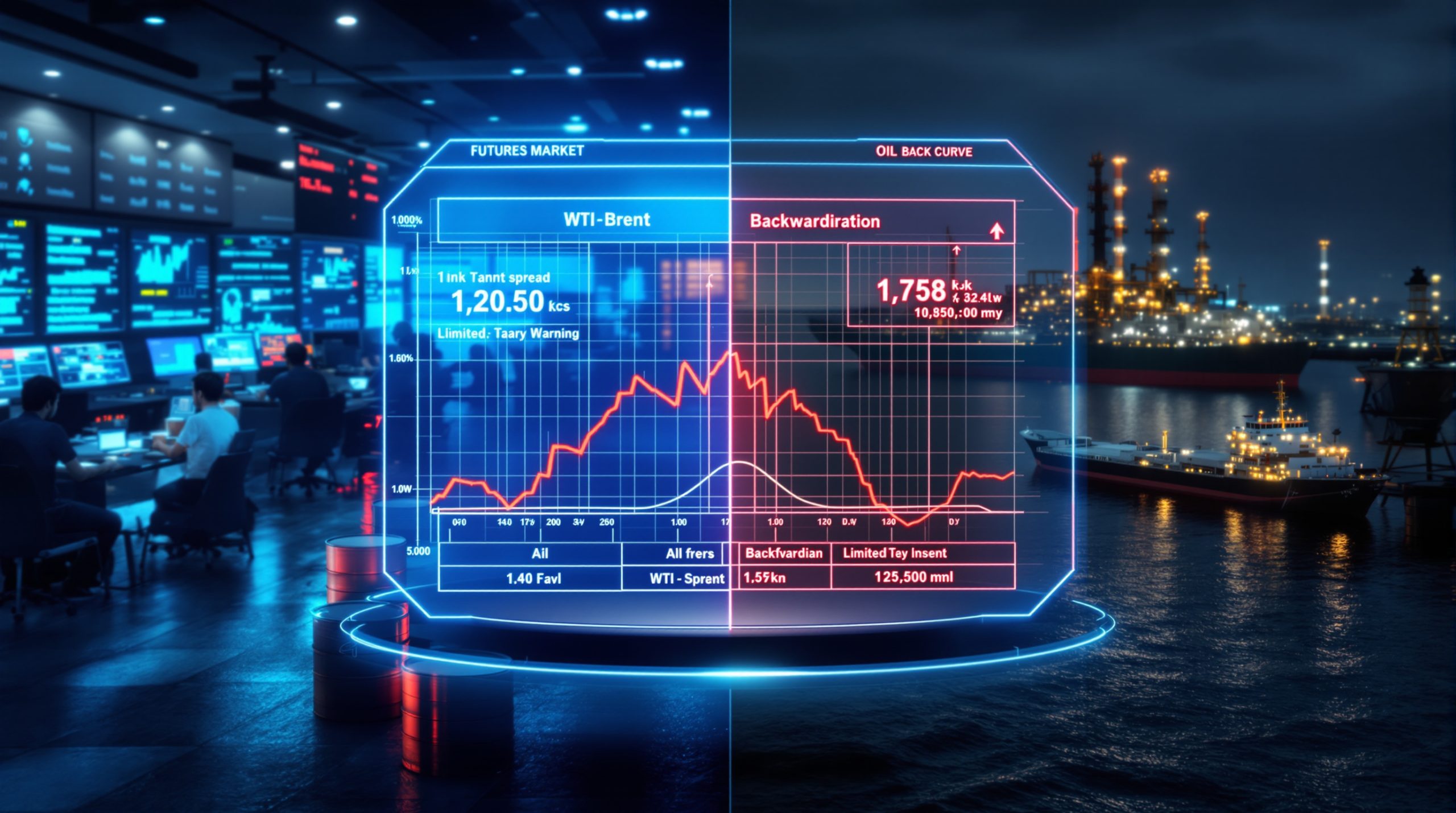Understanding the DRC Cobalt Export Ban: Global Market Implications
The Democratic Republic of Congo's recent policy decisions regarding cobalt exports have sent ripples throughout global supply chains, affecting industries from electric vehicles to consumer electronics. As the world's primary source of this critical mineral, the DRC's export regulations have significant implications for international markets and technology sectors dependent on cobalt.
Background and Policy Implementation
The Democratic Republic of Congo announced on June 21, 2025, a three-month extension to its cobalt export ban in the DRC, which was initially implemented in February 2025. This continuation signals the government's firm commitment to restructuring its critical minerals sector and capturing more value from its natural resources.
At its core, the ban prohibits the export of unprocessed cobalt materials, requiring that cobalt undergo domestic processing before leaving the country. This policy aligns with a broader trend of resource nationalism emerging across mineral-rich African nations, as governments seek to maximize economic benefits from their natural endowments.
"The extension of the ban represents a strategic move by the DRC government to encourage investment in local processing facilities and create additional employment opportunities for Congolese citizens," notes the SMM New Energy Research Team in their June 24, 2025 report.
The extended ban specifically targets raw cobalt ores and concentrates, aiming to transform the DRC from a mere supplier of raw materials into a producer of value-added products within the global cobalt supply chain.
Market Response to the Ban Extension
The announcement of the three-month extension triggered immediate volatility in global cobalt markets. Trading platforms showed significant price increases for both futures and spot prices of refined cobalt on the first trading day following the announcement.
Immediate Market Reactions
Market participants largely adopted a cautious stance in response to the news:
- Suspended quotations became widespread as suppliers assessed the situation
- Wait-and-see approach dominated trader behavior
- Increased inquiries from downstream buyers but limited actual transactions
- Inventory hoarding by mines and traders anticipating price increases
The cobalt supply chain experienced disruptions at multiple levels, with different segments responding in varied ways:
| Market Segment | Response to Ban Extension |
|---|---|
| Refined cobalt smelters | Maintained long-term contract supplies while limiting spot quotations |
| Cobalt intermediate products | Companies suspended quotations entirely; mines and traders withheld inventory |
| Cobalt sulfate | Limited quotations around 49,000-50,000 yuan/mt |
| Cobalt chloride | Complete suspension of quotations; initial price expectations around 60,000 yuan/mt |
| Co₃O₄ | Manufacturers halted quotations and shipments; downstream buyers adopted cautious stance |
Price Sentiment and Expectations
The SMM report indicates that market sentiment turned decidedly bullish following the ban extension, with industry participants anticipating significant price increases across cobalt products.
For cobalt chloride, some market analysts projected prices could exceed 70,000 yuan/mt, representing a substantial increase from previous levels. Meanwhile, Co₃O₄ prices were expected to rise significantly, with some sources suggesting a potential release price around 210,000 yuan/mt.
"The extent of price increases will largely depend on existing inventory levels and whether current stocks can sustain demand until December 2025," according to the SMM New Energy Research Team.
The general consensus among market participants pointed to a period of price volatility followed by sustained increases, particularly if the ban remained in place for the full three-month extension or beyond.
Strategic Significance of the DRC Cobalt Ban
The DRC accounts for approximately 70% of global cobalt production, giving it unparalleled influence over the supply and pricing of this critical mineral. The country's copper belt, particularly in its southern provinces, contains the world's richest cobalt reserves, often found alongside copper deposits.
Critical Applications of Cobalt
Cobalt's strategic importance stems from its essential role in several high-tech and green energy applications:
- Lithium-ion batteries – Provides thermal stability and high energy density
- Electric vehicle batteries – Key component in NMC (nickel-manganese-cobalt) cathodes
- Energy storage systems – Enhances battery performance and longevity
- Consumer electronics – Powers smartphones, laptops, and portable devices
- Aerospace applications – Used in superalloys for jet engines
- Industrial catalysts – Facilitates chemical reactions in petroleum refining
Despite ongoing research into alternatives, cobalt's unique properties make it difficult to substitute completely, particularly in applications requiring high performance and safety standards.
Supply Chain Vulnerability
The concentration of cobalt production in a single country creates inherent supply chain vulnerabilities, which the export ban has highlighted. This geographic concentration risk has been a concern for manufacturers and governments alike, with the current situation accelerating efforts to address this vulnerability.
Industry-Specific Impacts
The extended ban has affected various segments of the battery materials market and downstream industries differently, creating both challenges and opportunities depending on position within the supply chain.
Battery Materials Market Response
Ternary Cathode Precursors
According to the SMM report, prices for various ternary cathode precursors (including 5-series, 6-series, and 8-series) bottomed out and began rebounding following the ban extension. The discount coefficient for cobalt sulfate used in settlements between precursor manufacturers and downstream cathode material producers was expected to increase.
While quotations hadn't shown significant fluctuations immediately after the announcement, industry analysts anticipated prices would rise in line with increasing raw material costs.
Ternary Cathode Materials
The market for ternary cathode materials showed more immediate price responses, primarily driven by the strong rise in cobalt sulfate prices. This upward pressure managed to offset the suppressive effect of declining lithium chemical prices.
The SMM New Energy Research Team noted: "The continuous rise in cobalt sulfate prices is expected to benefit demand for medium-to-high nickel 6-series ternary cathode materials, while orders for 5-series products may continue to shrink."
This market dynamic reflects the complex interplay between different battery chemistries and how regulatory changes can shift demand patterns between competing technologies.
LCO (Lithium Cobalt Oxide) Materials
LCO manufacturers reacted strongly to the ban extension, with most suspending quotations and shipments entirely. The market faced contradictory pressures:
- Downward pressure from continuing declines in battery-grade lithium carbonate prices
- Upward pressure from Co₃O₄ prices showing strong momentum due to the DRC's policies
Industry analysts expected LCO prices to see significant increases in the short term, with the exact magnitude depending on Co₃O₄ transaction conditions as the market adjusted to the new supply reality.
Electric Vehicle Supply Chain Challenges
Battery Cell Manufacturers
Battery manufacturers found themselves in a complex position following the ban extension. While most maintained sufficient inventory levels for near-term production, they faced considerable uncertainty regarding future raw material cost increases.
Their ability to pass these costs on to electric vehicle manufacturers will determine the ultimate impact on production schedules and pricing strategies. The situation created a challenging environment for quarterly and monthly order negotiations throughout the supply chain.
Electric Vehicle Manufacturers
For electric vehicle manufacturers, the cobalt export ban in the DRC added supply chain complications during an already challenging period. June traditionally represents an off-season for new energy vehicle (NEV) sales, with auto sales showing mediocre performance.
"Entering July, no significant increase has been seen in the NEV market, while the small power market has entered a downward phase," noted the SMM report, indicating that manufacturers would need to carefully manage both supply challenges and demand fluctuations.
The ban extension may further complicate production planning and cost management for manufacturers heavily reliant on cobalt-containing batteries, potentially accelerating the shift toward alternative battery chemistries with lower or zero cobalt content.
Long-Term Strategic Implications
While the immediate market reactions to the ban extension have been significant, the long-term implications may prove even more transformative for global cobalt supply chains and battery technologies.
Processing Capacity Development
The extended ban is likely to accelerate investments in cobalt processing facilities both within the DRC and in alternative locations. Companies may expedite plans to establish or expand refining operations to secure supply chains and comply with the new regulatory environment.
This development could lead to a more distributed global processing capacity over time, potentially reducing the concentration risk currently associated with the cobalt supply chain. However, building new processing capacity requires significant capital investment and time, meaning supply constraints may persist in the near term.
Technological Adaptations
The continued supply uncertainty surrounding cobalt is expected to accelerate research and development into several areas:
- Cobalt-reduced battery chemistries – Lowering cobalt content while maintaining performance
- Cobalt-free alternatives – Particularly LFP (Lithium Iron Phosphate) batteries
- Battery recycling technologies – Recovering cobalt from end-of-life products
- Efficiency improvements – Maximizing performance with less cobalt input
These technological adaptations may reshape the battery landscape over time, potentially reducing dependency on primary cobalt supplies from the DRC.
Geopolitical Considerations
The DRC's policy shifts highlight the growing importance of energy transition and critical minerals in global geopolitics. Major economies including the United States, European Union, and China may intensify efforts to secure cobalt supply chains through various means:
- Strategic partnerships with the DRC government
- Development of alternative sourcing regions
- Investment in domestic processing capabilities
- Creation of strategic mineral reserves
- Support for recycling infrastructure development
These geopolitical dynamics will likely influence international trade policies, investment patterns, and technology development priorities in the coming years.
Cobalt Price Trajectory and Market Outlook
The cobalt market faces a period of adjustment and price discovery as participants adapt to the new supply reality created by the DRC's export ban extension.
Short-Term Price Expectations
In the immediate future, cobalt prices are expected to remain volatile as the market adjusts to the extended ban. Key factors influencing short-term prices include:
- Current inventory levels throughout the supply chain
- Production adjustments at mines and processing facilities
- Buyer willingness to accept higher prices
- Speculative activity in commodity markets
The SMM report indicated bullish market sentiment, with expectations of significant price increases across cobalt products. For cobalt chloride, initial price expectations were around 60,000 yuan/mt, with some market participants optimistic about potential increases beyond 70,000 yuan/mt.
Medium-Term Considerations
Over the next 6-12 months, price developments will depend on several factors:
- Whether the ban is lifted after three months or extended further
- Development of new processing capacity within and outside the DRC
- Demand trends in electric vehicle and energy storage markets
- Potential substitution effects as manufacturers seek alternatives
The medium-term outlook remains uncertain, with much depending on the DRC government's future policy decisions and the speed at which the market can adapt to the new regulatory environment.
Impact on End Product Pricing
The increased cobalt prices resulting from the ban extension will likely affect end product costs, particularly for:
- Electric vehicle batteries, potentially influencing adoption rates
- Consumer electronics with cobalt-containing batteries
- Industrial applications requiring cobalt-based catalysts or alloys
Manufacturers will need to decide whether to absorb these increased costs or pass them on to consumers, with potential implications for market growth and technology adoption rates.
Alternative Supply Sources and Diversification
With primary supply from the DRC constrained, attention is turning to alternative cobalt sources and supply chain diversification strategies.
Secondary Cobalt Recovery
Recycling and recovery operations are gaining increased attention as potential secondary sources of cobalt:
- Battery recycling – Recovering cobalt from end-of-life lithium-ion batteries
- Industrial catalyst recovery – Extracting cobalt from spent catalysts
- Mining waste processing – Reprocessing tailings and waste material
- Urban mining – Recovering cobalt from electronic waste
However, the SMM report notes economic challenges in the recycling sector: "The profits of most wet-process plants remain below the surplus line… small and medium-sized grinding mills continue to operate at negative margins."
These economic realities may limit the speed at which recycling capacity can expand to address supply shortfalls, despite the favorable price environment created by the ban.
Geographic Diversification
While the DRC dominates global production, other countries with cobalt resources include:
| Country | Notable Characteristics |
|---|---|
| Australia | Stable jurisdiction, growing production |
| Canada | Established mining sector, strong ESG practices |
| Russia | Significant resources but geopolitical complications |
| Cuba | Historical producer with potential for expansion |
| Morocco | Emerging producer with infrastructure challenges |
| Philippines | Developing resources with environmental concerns |
However, these alternative sources collectively represent only about 30% of global production capacity, limiting their ability to offset major disruptions from the DRC in the short term.
Business Risk Management Strategies
Companies dependent on cobalt are implementing various strategies to navigate the current market disruptions and prepare for potential future supply challenges.
Supply Chain Resilience Measures
Businesses throughout the cobalt value chain are adopting multiple approaches to enhance resilience:
- Diversifying supply sources where feasible to reduce dependency on single regions
- Establishing longer-term contracts with reliable suppliers to secure volume
- Building strategic inventory buffers to weather short-term disruptions
- Accelerating research into alternatives or reduced-cobalt technologies
- Developing recycling capabilities to recover cobalt from end-of-life products
Commercial and Pricing Adaptations
The extended ban has prompted businesses to adjust their commercial terms and pricing approaches:
- Implementation of more flexible pricing mechanisms linked to market indices
- Adjustment of payment terms to manage cash flow impacts
- Renegotiation of discount coefficients for materials containing cobalt
- Development of contingency plans for further supply disruptions
These adaptations reflect the market's ongoing effort to find a new equilibrium in response to the changed supply landscape.
Recycling Industry Implications
The cobalt export ban has significant implications for the battery recycling process, potentially accelerating its development despite current economic challenges.
Economic Challenges and Opportunities
According to the SMM report, the recycling sector faces several economic hurdles despite the favorable price environment:
- The profits of most wet-process recycling plants remain below the surplus line
- LFP wet-process plants are significantly affected by declining lithium chemical prices
- Small and medium-sized grinding mills continue to operate at negative margins
These economic realities create a complex landscape where higher cobalt prices improve the business case for recycling, but other market factors continue to challenge profitability.
Growing Strategic Importance
Despite current challenges, the extended ban strengthens the long-term strategic case for cobalt recycling. With primary supply constrained and prices rising, recovering cobalt from various sources becomes increasingly economically attractive:
- End-of-life lithium-ion batteries
- Industrial catalysts and superalloys
- Manufacturing scrap and production waste
- Consumer electronics and other applications
The recycling industry is likely to see accelerated investment and technological development as businesses and governments recognize its role in addressing supply vulnerabilities. Furthermore, the critical minerals recycling transition is becoming increasingly important for companies seeking to reduce dependence on primary mining sources.
Technological Development Focus
To improve economics and increase recovery rates, the recycling industry is focusing on several technological advancements:
- Improved sorting and pre-processing to enhance material segregation
- Advanced hydrometallurgical processes to increase recovery efficiency
- Direct recycling methods that preserve cathode structures
- Automated disassembly systems to reduce labor costs
- Standardized battery designs that facilitate easier recycling
These technological developments may eventually transform recycling from a marginal activity to a central component of the cobalt supply chain.
Frequently Asked Questions About the DRC Cobalt Ban
How long will the DRC cobalt export ban last?
The ban has been extended for an additional three months beyond the initial implementation period that began in February 2025. Whether it will be lifted after this extension or further prolonged remains uncertain and will depend on the DRC government's assessment of its effectiveness in achieving policy objectives.
Will the ban cause electric vehicle prices to increase?
The ban may contribute to increased production costs for electric vehicles that use cobalt-containing batteries. However, the actual impact on consumer prices will depend on:
- Manufacturers' ability to absorb these costs
- The availability and adoption of alternative battery chemistries
- Competitive pressures in the electric vehicle market
- The duration of the export ban and resulting price increases
Some manufacturers may accelerate their transition to reduced-cobalt or cobalt-free battery technologies to mitigate these cost pressures.
Are there viable alternatives to cobalt in batteries?
Several alternatives exist with varying degrees of commercial readiness:
- LFP (Lithium Iron Phosphate) batteries contain no cobalt and are increasingly used in electric vehicles, particularly in standard-range models
- High-nickel NMC cathodes reduce cobalt content significantly while maintaining energy density
- LNMO (Lithium Nickel Manganese Oxide) offers a potential cobalt-free alternative
- Solid-state battery technologies may reduce or eliminate cobalt requirements
Ready to Spot the Next Major ASX Discovery?
Discover significant ASX mineral discoveries in real-time with Discovery Alert's proprietary Discovery IQ model, turning complex mineral data into actionable investment insights for short-term traders and long-term investors alike. Explore our dedicated discoveries page to understand how major mineral discoveries can lead to exceptional market returns, and begin your 30-day free trial today.




